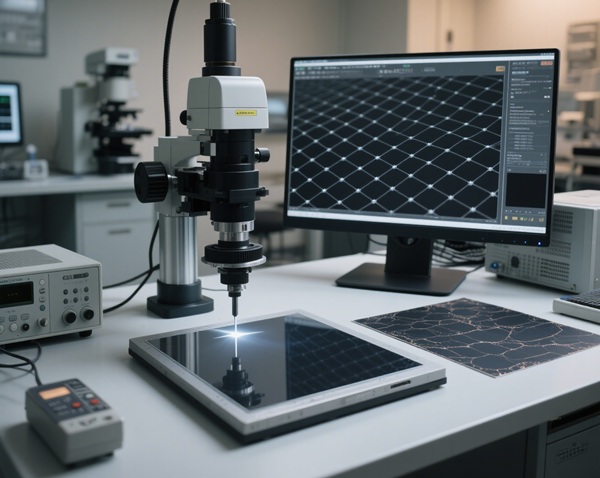What Impact Does the Thickness of Graphene Sheets Have on Its Properties?
Graphene, a single layer of carbon atoms arranged in a hexagonal lattice, has emerged as a revolutionary material in advanced technologies. But what many engineers overlook is how dramatically its properties shift depending on the number of layers. From electronics to spintronics and magnetics, graphene thickness determines whether it performs optimally or fails. This article explores one question: how does the thickness of graphene sheets affect its electrical, thermal, optical, mechanical, and magnetic performance? We’ll also compare it to other 2D materials and discuss future trends.
At Advanced Ceramic Hub, we specialize in high-quality graphene sheet products, ensuring optimal performance for industrial and scientific applications.

What Is a Graphene Sheet and How Is Graphene Sheet Thickness Defined?
What exactly is meant by “graphene sheet thickness”? A graphene sheet refers to an atomic-layer structure of sp²-hybridized carbon atoms. When we talk about thickness, we mean the number of stacked atomic layers—typically grouped as monolayer (1 layer), few-layer (2–10), and multilayer (>10).
| Type | Layers | Thickness (nm) | Common Applications |
| Monolayer Graphene | 1 | ~0.34 | Transparent conductors, FETs |
| Few-layer Graphene | 2–10 | 0.7–3.4 | Flexible electronics, sensors |
| Multilayer Graphene | >10 | >3.4 | Batteries, thermal films, EMI shields |
Thickness influences how electrons, heat, light, and spins behave inside the material, making it one of the most critical parameters in graphene engineering. For engineers and researchers, understanding this relationship is key to selecting the right form of graphene for each application.
Explore our high-quality graphite products.
How Does Graphene Sheet Thickness Affect Electrical Conductivity?
Are monolayer graphene sheets always more conductive? Generally, yes. Electrical conductivity decreases as thickness increases because additional layers introduce interlayer resistance and electron scattering.
| Thickness | Carrier Mobility (cm²/V·s) | Sheet Resistance (Ω/□) |
| Monolayer | >200,000 | ~30 |
| 3 Layers | ~100,000 | ~50 |
| 10 Layers | ~20,000 | ~120 |
| >10 Layers | <10,000 | >150 |
For magnetic sensors and RF devices where signal integrity matters, using a thinner graphene sheet ensures optimal current flow. Balancing conductivity with manufacturing ease often requires selecting a few-layer form.
How Does Graphene Sheet Thickness Influence Optical Transparency?
Do more layers make the graphene sheet less transparent? Absolutely. Each layer absorbs ~2.3% of visible light, so transparency drops with increasing thickness.
| Layers | Transparency (%) |
| 1 | ~97.7 |
| 3 | ~93.1 |
| 5 | ~88.5 |
| 10 | ~77.0 |
| >20 | <50.0 |
In optoelectronic devices like transparent antennas or touchscreens, a monolayer or bilayer graphene sheet is usually preferred. Designers must weigh visual clarity against physical robustness when selecting the layer count.
How Does Thermal Conductivity Change with Graphene Sheet Thickness?
Does thermal conductivity improve or decline with thickness? It declines. A thicker graphene sheet suffers from phonon scattering between layers, reducing its ability to conduct heat efficiently.
| Layers | Thermal Conductivity (W/m·K) |
| 1 | ~5000 |
| 3 | ~3500 |
| 5 | ~3000 |
| 10 | ~1500 |
| >10 | ~1000 |
For thermal interface materials in high-power magnetic modules, a thinner graphene sheet ensures better heat dispersion. Choosing the right thickness can significantly reduce thermal buildup and improve system lifespan.
How Does Graphene Sheet Thickness Impact Mechanical Strength?
Does a thicker graphene sheet mean stronger graphene? Surprisingly, no. A monolayer graphene sheet is the strongest form. As thickness increases, weak van der Waals bonding between layers allows slippage, reducing overall tensile strength.
| Layers | Young’s Modulus (TPa) | Tensile Strength (GPa) |
| 1 | ~1.0 | ~130 |
| 3 | ~0.85 | ~100 |
| 10 | ~0.6 | ~70 |
| >10 | <0.5 | ~50 |
For flexible enclosures in magnetic field environments, a few-layer design offers a tradeoff between strength and handling. Mechanical reliability often depends on this delicate thickness balance.
How Does Graphene Sheet Thickness Affect Magnetic and Spintronic Behavior?
What role does graphene sheet thickness play in spin transport and magnetic field sensitivity? Thin graphene—especially monolayer—shows longer spin relaxation lengths, ideal for spintronic and quantum magnetic devices.
| Layers | Spin Relaxation Length (μm) | Magnetoresistance |
| 1 | >10 | High |
| 3 | ~5 | Medium |
| >10 | <2 | Low |
For graphene-based magnetometers or MRAM applications, keeping graphene sheet layers to a minimum enhances performance. Engineers must carefully consider this when designing spin-sensitive electronics.
How Does Graphene Sheet Compare with Other 2D Materials by Thickness?
Is a graphene sheet always better than MoS₂ or h-BN? Not necessarily. While graphene excels in conductivity and strength, other materials may perform better for semiconducting or insulating roles.
| Material | Bandgap | Thermal Conductivity | Thickness Sensitivity |
| Graphene | 0 eV | Very High (~5000 W/m·K) | Strong |
| MoS₂ | ~1.8 eV | Moderate | Strong |
| h-BN | ~5.9 eV | High | Minimal |
| Phosphorene | ~0.3–2 eV | Moderate | Very Strong |
Graphene sheets offer exceptional performance in conductivity- and spin-dependent use cases, but it’s not a one-size-fits-all solution. Material selection must align with specific project goals.
Request a custom quote for the graphene sheet product.
What Graphene Sheet Thickness Works Best for Specific Applications?
How do engineers choose the right graphene sheet thickness for their use case? It depends on whether conductivity, strength, heat transfer, or flexibility is the priority.
| Application Need | Ideal Thickness |
| Transparent electronics | 1–2 layers |
| Thermal interfaces | 1–5 layers |
| Spintronic devices | 1–2 layers |
| Flexible substrates | 3–5 layers |
| Structural durability | >10 layers |
Making the right graphene sheet thickness choice early ensures efficient performance and reduced material waste. It also helps prevent costly design changes later in development.
What Are the Future Trends in Graphene Sheet Thickness Control?
Can we achieve atomic-level precision in graphene sheet thickness? The answer is increasingly yes. Recent advancements in material science and nanofabrication techniques have made it possible to fine-tune graphene thickness with remarkable accuracy. This precision opens up new opportunities for engineering graphene-based devices with tailored properties.
Key future trends in graphene thickness control include:
- Chemical Vapor Deposition (CVD): This method enables the growth of large-area, uniform graphene layers, allowing better control over the number of layers during synthesis.
- Atomic Layer Etching: By selectively removing single atomic layers, this technique offers precise thickness adjustment after initial graphene fabrication.
- Layer-by-Layer Stacking: Building customized heterostructures by stacking different 2D materials layer by layer provides control over thickness and combined functionalities.
- Laser Thinning: Localized laser processing can reduce graphene thickness in specific regions, enabling device-specific tuning of electrical and optical properties.
- Roll-to-Roll Manufacturing: This scalable approach allows the production of continuous, thin graphene sheets with consistent thickness, suitable for commercial applications.
As these technologies mature, controlling graphene sheet thickness will no longer be a manufacturing hurdle but a deliberate design choice. Engineers and designers will harness this capability to optimize performance in applications ranging from flexible magnetics and thermal management to quantum computing devices. Precise thickness control will unlock the next generation of graphene-enabled innovations.
FAQ
| Question | Answer |
| Is monolayer graphene always best? | Not always—it performs best but is fragile and expensive to produce. |
| Can thicker graphene still be conductive? | Yes, though resistance increases and mobility drops. |
| What’s the best graphene for spintronics? | Monolayer or bilayer graphene due to long spin relaxation lengths. |
| Is graphene stronger when thicker? | No. Monolayer graphene has the highest intrinsic strength. |
| How does graphene compare to MoS₂? | Graphene is more conductive; MoS₂ is better for semiconducting behavior. |
Conclusion
Graphene sheet thickness isn’t just a dimension—it’s a design variable that shapes how graphene behaves in real-world systems. From electrical conductivity to magnetoresistance, layer count determines performance. Thinner sheets offer peak efficiency in heat, current, and spin transport. Thicker sheets improve mechanical stability and processability. For those working with magnetic, thermal, or electronic systems, understanding and optimizing graphene thickness is no longer optional—it’s fundamental to innovation. As technologies evolve, mastering thickness control will separate leading-edge solutions from obsolete designs. Advanced Ceramic Hub remains committed to providing the latest insights and high-quality materials to help innovators harness the full potential of graphene and other advanced materials.
Looking for high-quality graphene sheet products? Contact us today!
